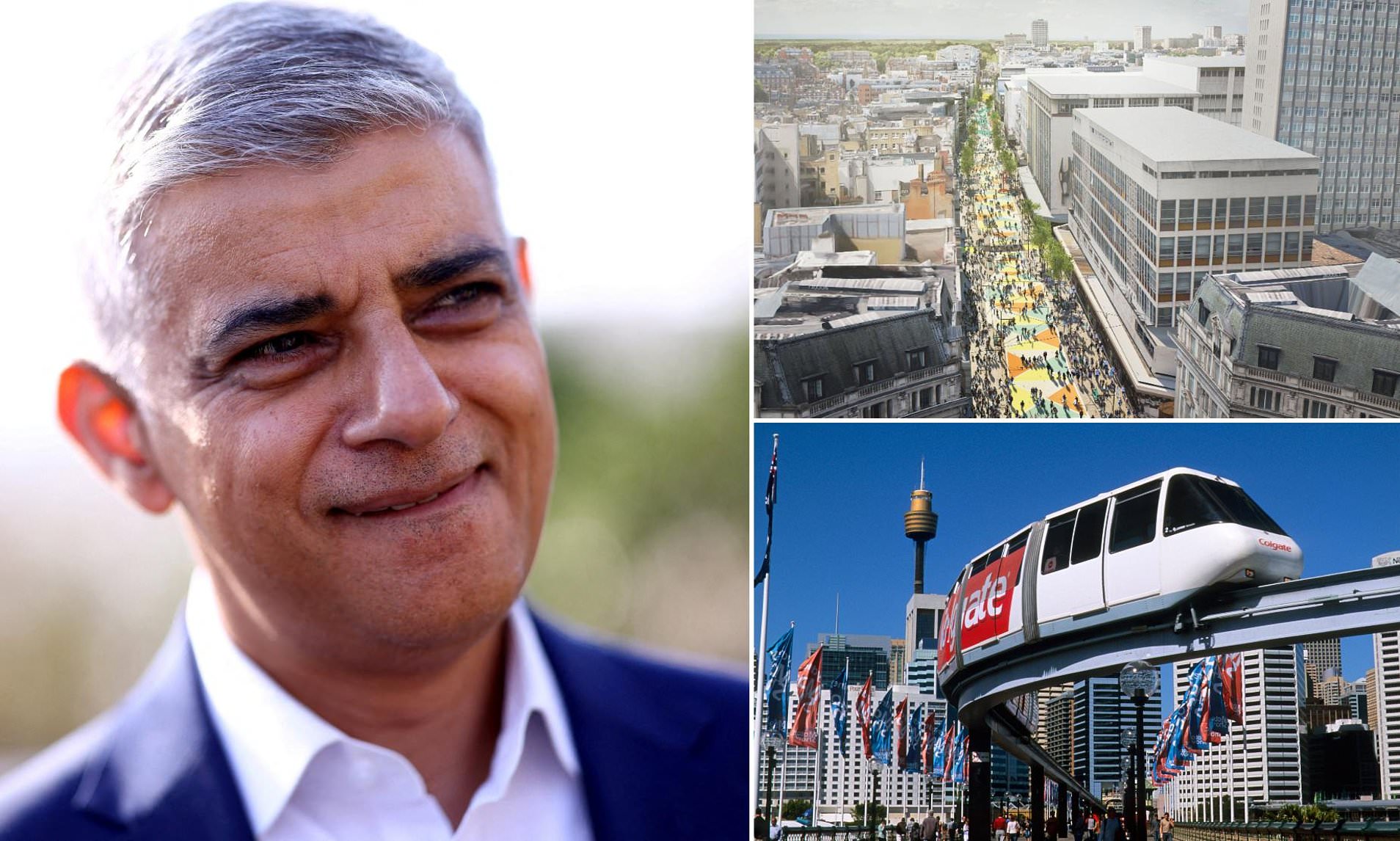
THE FAILED CAR-QUASHING PROPOSALS TO RID OXFORD STREET OF TRAFFIC
As Sadiq Khan announces plans to pedestrianise Oxford Street, we look at some of the past failed proposals including a monorail and a free tram loop.
The London Mayor has doubled down on plans to pedestrianise the famous shopping zone, with critics worried it will turn the area into a crime haven.
Mr Khan wants work to start within two years to remove all vehicles from Oxford Street as part of a wider regeneration project.
But industry leaders are calling for 'strong safety measures' to accompany the plans, given there are fears it could increase crimes such as shoplifting and pickpocketing.
Mr Khan first proposed the idea in his 2016 mayoral manifesto, but he certainly wasn't the first.
There have been several concepts for banning traffic in central London's polluted shopping avenue before, but none have ever got off the ground.
One of the most unusual was a monorail which would have run on a track 50ft above shoppers.
The idea was drawn up in 2012 by engineers KBR for a system to run the mile-length of the street and link it with Piccadilly Circus.
Lord Rogers, the Mayor's leading architectural adviser at the time, presented the idea to business leaders and said a similar system had worked well in Sydney.
But it was never taken forward - and the Sydney monorail ceased operating in June 2013.
Another plan for Oxford Street unveiled in 2008 by former mayor Ken Livingstone was a £200million tram system, which would have also seen the road pedestrianised.
Mr Livingstone wanted the system in place by 2018, but it never went forward amid a series of issues including concerns over overcrowding and insufficient space for the construction of a tram depot.
Boris Johnson spiked the plans, but he also looked into partially pedestrianising Oxford Steet towards his tenure as Mayor of London in 2016.
A further unusual proposal to pedestrianise the street was a plan in 1982 to build a flyover for buses and taxis which would dip down to street level at Oxford Circus.
The scheme, which was estimated to cost £47million in 1982 prices, would have avoided having to divert vehicles onto side streets – but concerns were raised about its viability and it never happened.
Going even further back, a report in the 1960s suggested dropping the road slightly into a shallow depression and raising the shopping level up by 20ft.
But the study, by Professor Sir Colin Buchanan, concluded that it was already too late for such a major reconstruction of the street – and the plan only ever remained at the idea stage.
Sadiq Khan announced plans in 2022 for the stretch of Oxford Street between Great Portland Street and John Prince's Street to be turned into a piazza - but these too were cancelled.
This time around, Mr Khan may be more successful as the City of Westminister, which oversees Oxford Street, is now under a Labour majority.
The plan has support from the Government with Deputy Prime Minister Angela Rayner saying: 'This plan to revitalise Oxford Street will drive growth by creating new jobs, generating economic activity, and giving a much-needed boost to London’s night-time economy.'
Whatever the latest plans are, they will come with a huge range of challenges such as where to divert traffic and bus routes.
But there have been successful pedestrianisation experiments in London before as in 1973, Carnaby Street banned traffic which resulted in a 30 per cent increase in footfall.
Read more 2024-09-17T18:02:50Z dg43tfdfdgfd